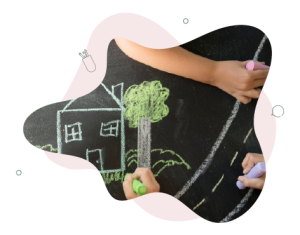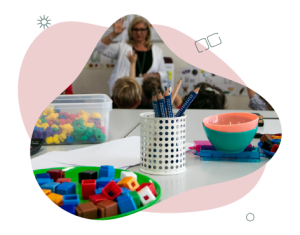19 Indoor play-based learning – organising
Teachers can design areas that are versatile in terms of resources and social engagement. Play spaces can be adapted for small groups, pairs, and individuals.
Planning for social interactions and the development of relationships with peers can implicitly take place through the design of environment. Furthermore, creating spaces for individual play can support student’s concentration, creativity, and special interests. The cues teachers provide signpost to students how an area can be used most effectively. For example:
- providing just one or two chairs at a table for individual or pair play, or
- making a large space with plentiful resources for a larger group.
Open-ended play enables children to creatively make connections between different playspaces. As children move resources to different areas, they imaginatively extend their play. For example, having blocks near a socio-dramatic play area may inspire children to incorporate the blocks into their dramatic play, or bring home corner props into their block play. Effectively designing indoor settings takes into consideration the space, the resources, and children’s agency.
This supports creativity, flexible thinking, and organisational skills.
Collaborating with children to organise the indoor space
As students progress in their play, think about providing resources for a play area but ask them to organise it. For example:
- Provide resources and furniture (chairs, tables, home corner furniture) for a play area.
- Ask your students to arrange them for their own play themselves.
This provides children with creative challenge, supporting a sense of agency, ownership, and belonging. It also encourages planning, organisational skills, metacognition, communication, and collaboration. Teachers can supportively challenge students to create or decide on their own props for play, such as hats and costumes, pretend money, credit cards, tickets, menus, newspapers, or books. Ask them to think about what they could use to create their props. This helps with creative thinking and planning. Embracing open-ended materials in play-based approaches encourages creativity, flexibility, planning, communication, and listening.



